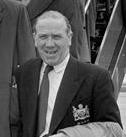|
Attila Abonyi
Attila Abonyi (born 16 August 1946 in Budapest) is a former Hungarian-born Australian soccer manager and player and played for the Australia national team. Abonyi made his senior international debut for Australia in 1967 at age 20, and had earned 61 caps, including appearing in the 1974 World Cup; Australia's first entry into the FIFA World Cup finals, World Cup. In his first nine matches for Australia, he scored eleven goals all coming from the 1967 South Vietnam Independence Cup. He scored his first of three international goals against New Zealand national football team, New Zealand in November 1967. Early life Attila Abonyi was born and raised in Budapest, Hungary. Abonyi did not play regular football in Hungary, as he could not play junior competitive football until the age of twelve. He migrated from Budapest to Melbourne at age 10 after the Hungarian Revolution of 1956. [...More Info...] [...Related Items...] OR: [Wikipedia] [Google] [Baidu] |
Budapest
Budapest (, ; ) is the capital and most populous city of Hungary. It is the ninth-largest city in the European Union by population within city limits and the second-largest city on the Danube river; the city has an estimated population of 1,752,286 over a land area of about . Budapest, which is both a city and county, forms the centre of the Budapest metropolitan area, which has an area of and a population of 3,303,786; it is a primate city, constituting 33% of the population of Hungary. The history of Budapest began when an early Celtic settlement transformed into the Roman town of Aquincum, the capital of Lower Pannonia. The Hungarians arrived in the territory in the late 9th century, but the area was pillaged by the Mongols in 1241–42. Re-established Buda became one of the centres of Renaissance humanist culture by the 15th century. The Battle of Mohács, in 1526, was followed by nearly 150 years of Ottoman rule. After the reconquest of Buda in 1686, the ... [...More Info...] [...Related Items...] OR: [Wikipedia] [Google] [Baidu] |
1967 South Vietnam Independence Cup
The 1967 South Vietnam Independence Cup ( vi, Cúp Quốc Khánh 1967) was an invitational men's association football tournament hosted by South Vietnam and played in Saigon during the Vietnam War by national teams from mostly anti-communist nations that supported the American war effort. The tournament was meant to be as a propaganda exercise. The tournament had previously been held annually since 1961, though only involving South East Asian nations. It was New Zealand's first international tournament and it was to become Australia's first honour in international football. The Australian team toured South East Asia before and after the tournament, winning all ten matches. Eight of the team's players went on to be part of Australia's 1974 FIFA World Cup squad, but their achievement in Saigon was largely overlooked back home. Matches at Cong Hoa Stadium and training at an army base adjacent to a mine-field were conducted under armed guard and the teams also trained on their hote ... [...More Info...] [...Related Items...] OR: [Wikipedia] [Google] [Baidu] |
1974 World Cup
The 1974 FIFA World Cup was the tenth FIFA World Cup, a quadrennial football tournament for men's senior national teams, and was played in West Germany (and West Berlin) between 13 June and 7 July. The tournament marked the first time that the current trophy, the FIFA World Cup Trophy, created by the Italian sculptor Silvio Gazzaniga, was awarded. The previous trophy, the Jules Rimet Trophy, had been won for the third time by Brazil in 1970 and awarded permanently to the Brazilians. This was the first out of three World Cups to feature two rounds of group stages. West Germany won the title, beating the Netherlands 2–1 in the final at the Olympiastadion in Munich. This was the second victory for West Germany, who had also won in 1954. Australia, East Germany, Haiti and Zaire made their first appearances at the final stage, with the latter two making their only appearance, and East Germany making their only appearance before Germany was reunified in 1990. Host selection West ... [...More Info...] [...Related Items...] OR: [Wikipedia] [Google] [Baidu] |
Australia National Football Team
Australia national soccer team may refer to: * Australia men's national soccer team ** Australia men's national under-23 soccer team ** Australia men's national under-20 soccer team ** Australia men's national under-17 soccer team ** Australia men's national soccer B team * Australia women's national soccer team ** Australia women's national under-23 soccer team ** Australia women's national under-20 soccer team ** Australia women's national under-17 soccer team See also * Australia national beach soccer team * Australia national football team (other) Australia national football team may refer to: * Australia men's national soccer team ''(The Socceroos)'' * Australia women's national soccer team ''(The Matildas)'' * Australia national American football team ''(The Outbacks)'' * Australia men's i ... * Soccer in Australia {{Set index article ... [...More Info...] [...Related Items...] OR: [Wikipedia] [Google] [Baidu] |
Singapore National Football Team
The Singapore national football team (, zh, 新加坡國家足球隊, ta, சிங்கப்பூர் தேசிய கால்பந்து அணி ) represents the Republic of Singapore in the senior men's international football. It is organised by the Football Association of Singapore (FAS), the governing body of football in Singapore, which is affiliated with the Asian Football Confederation (AFC) and the regional ASEAN Football Federation (AFF). The current head coach is Takayuki Nishigaya. The team's colours are red and white. Singapore are colloquially known as "The Lions". Singapore has one of the oldest national teams in Asia, with the FAS being the oldest football association in the continent itself. Despite the country having a relatively small population pool, it has generally punched above its weight by successively producing squads that has fiercely competed with its larger and much more populated neighbours. This can be seen in its most signi ... [...More Info...] [...Related Items...] OR: [Wikipedia] [Google] [Baidu] |
|


%2C_National_Stadium_--_2019_--_4721.jpg)
